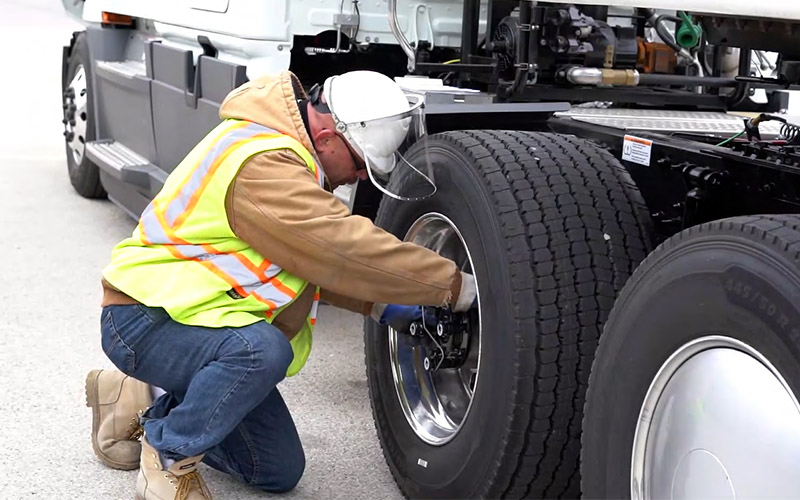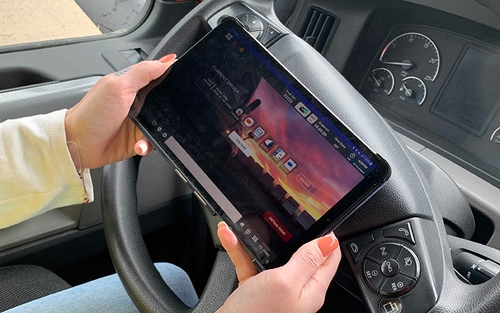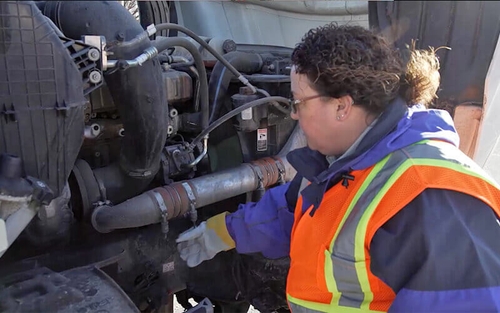What is a Driver Vehicle Inspection Report (DVIR)?


By The Schneider Guy
Estimated reading time: 3 minutes
As a truck driver, ensuring your vehicle is in safe and proper operating condition helps promote your safety and the safety of others on the road.
At Schneider, Driver’s Vehicle Inspection Reports (DVIR) are just one of the many tools we use to maintain and prioritize this safety. But what exactly is a DVIR, and why is it so important? Keep reading to find out.
What is a DVIR?
A DVIR is a formal document that shows a driver has inspected a commercial vehicle or trailing unit when dropped or at the end of their workday. It serves as a checklist to ensure all parts of the truck are in good working order.
The report must identify any issues that could impact the operation of the vehicle or lead to a breakdown. After a defect is reported, the carrier the driver works for must certify and repair the issue before the vehicle returns to service.
Addressing these problems quickly improves safety and can help drivers avoid delays that could impact their:
- Hours of service.
- Delivery times.
- Compliance checks at DOT inspections.
Who has to fill out DVIRs?
Truck drivers need to complete a DVIR if they operate commercial vehicles involved in interstate commerce and meet specific criteria defined by the FMCSA, including:
- They operate a vehicle with a gross vehicle weight rating (GVWR) of 10,001 pounds or more.
- They transport hazardous materials that require placarding.
Are DVIRs required by law?
According to FMCSA regulations, drivers are required to complete a DVIR when they find a defect or deficiency with their vehicle while completing an inspection. While drivers are required to complete a post-trip inspection every day to ensure everything is in proper operating condition, 49 CFR 396.11. states, “drivers are not required to prepare a report if no defect or deficiency is discovered by or reported to the driver.”
That said, many carriers require drivers to complete a DVIR after all post-trip inspections to ensure their equipment is in safe, working order. At Schneider, for example, drivers are required to complete and sign a DVIR for:
- Each piece of equipment they drop.
- Each piece of equipment still in their possession at the end of their shift.
According to the FMCSA, carriers are also required to keep records of DVIRs for at least three months.
What is included in a DVIR?
According to 49 CFR 396.11, a DVIR must cover, at minimum, the following parts and accessories:
- Service brakes including trailer brake connections.
- Parking brake.
- Steering mechanism.
- Lighting devices and reflectors.
- Tires.
- Horn.
- Windshield wipers.
- Rear vision mirrors.
- Coupling devices.
- Wheels and rims.
- Emergency equipment.
Most electronic DVIRs include a list of these elements as well as any other parts the carrier requires a driver to inspect as part of their DVIR.
When submitting a DVIR, drivers typically also have to provide additional information such as:
- Their name.
- The date.
- The vehicle’s ID and license number.
- Their signature.
- The signature of the mechanic.
What is the process of filling out a DVIR?
Every company has its drivers complete DVIRs in a different way, but there are a few general steps:
- Inspect the vehicle: Begin by completing a walk-around inspection of your vehicle. Use our post-trip inspection guide to make sure you’re checking all the right components.
- Report any defects: If you find any defects or issues during your inspection, document them in the DVIR. On an electronic DVIR, there will be space to note the specific nature and location of the issues.
- Sign off on the report: Once you've completed your inspection and documented any issues, sign off on the report to confirm the inspection has been done.
- Take corrective action: If any defects were reported, they need to be addressed before the vehicle is used again. Your carrier is responsible for repairing any defect or deficiency before you operate it again. Your carrier must also certify on the original DVIR that the defect or deficiency has been repaired or that repair is unnecessary.
Looking for a full breakdown of a pre-trip inspection?

Schneider Guy loves the "Big Orange." He's passionate about the trucking industry and connecting people to rewarding careers within it. He's been the eyes and ears of our company since our founding in 1935, and he's excited to interact with prospective and current Schneider associates through "A Slice of Orange."



